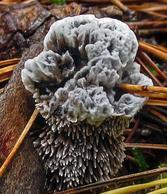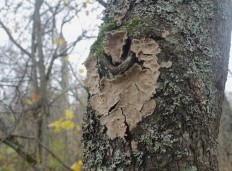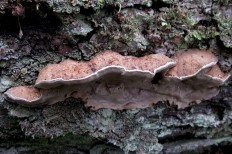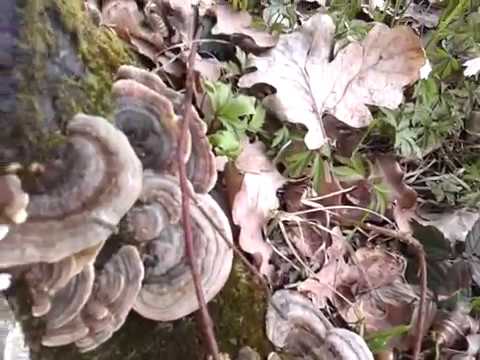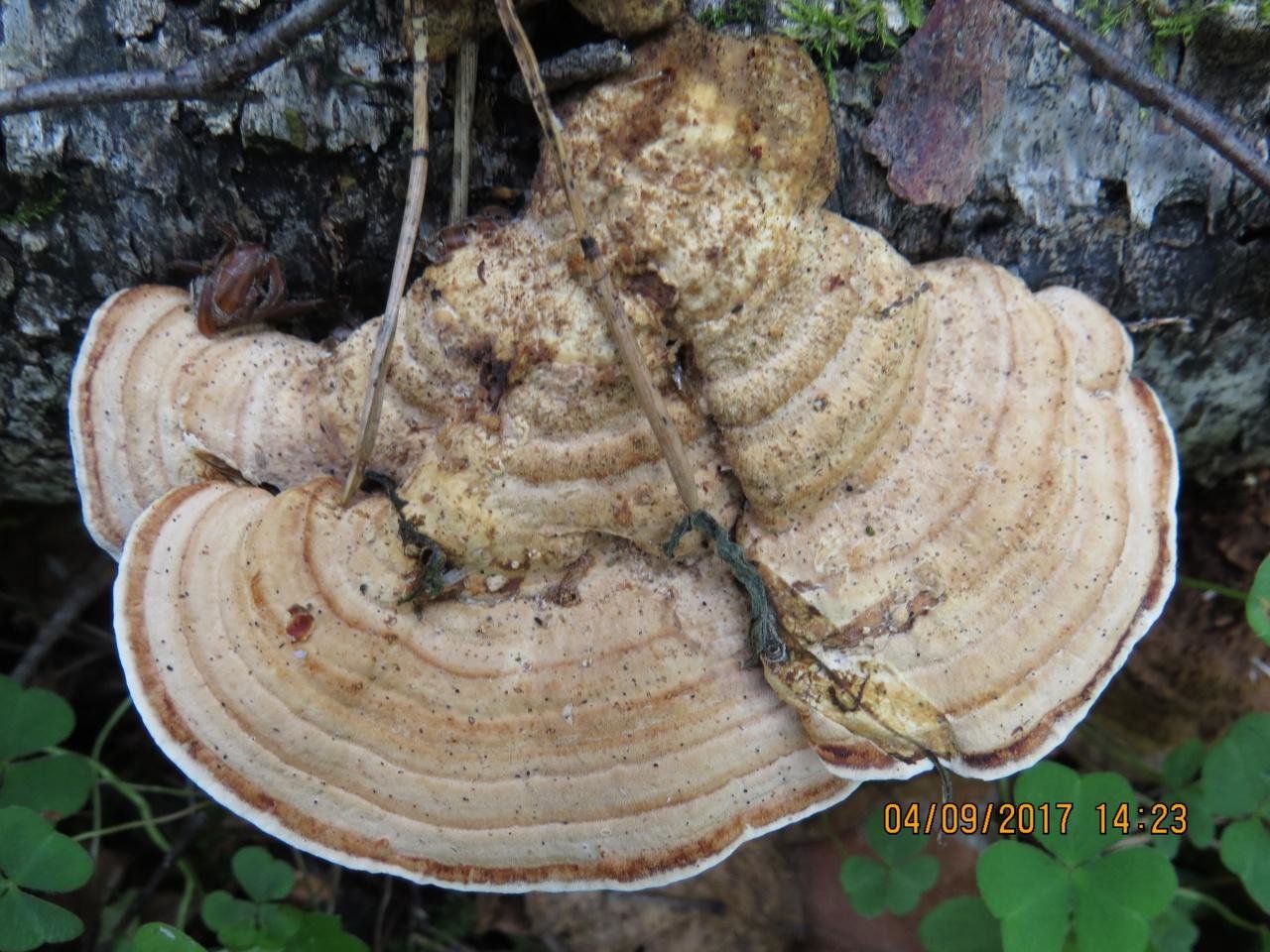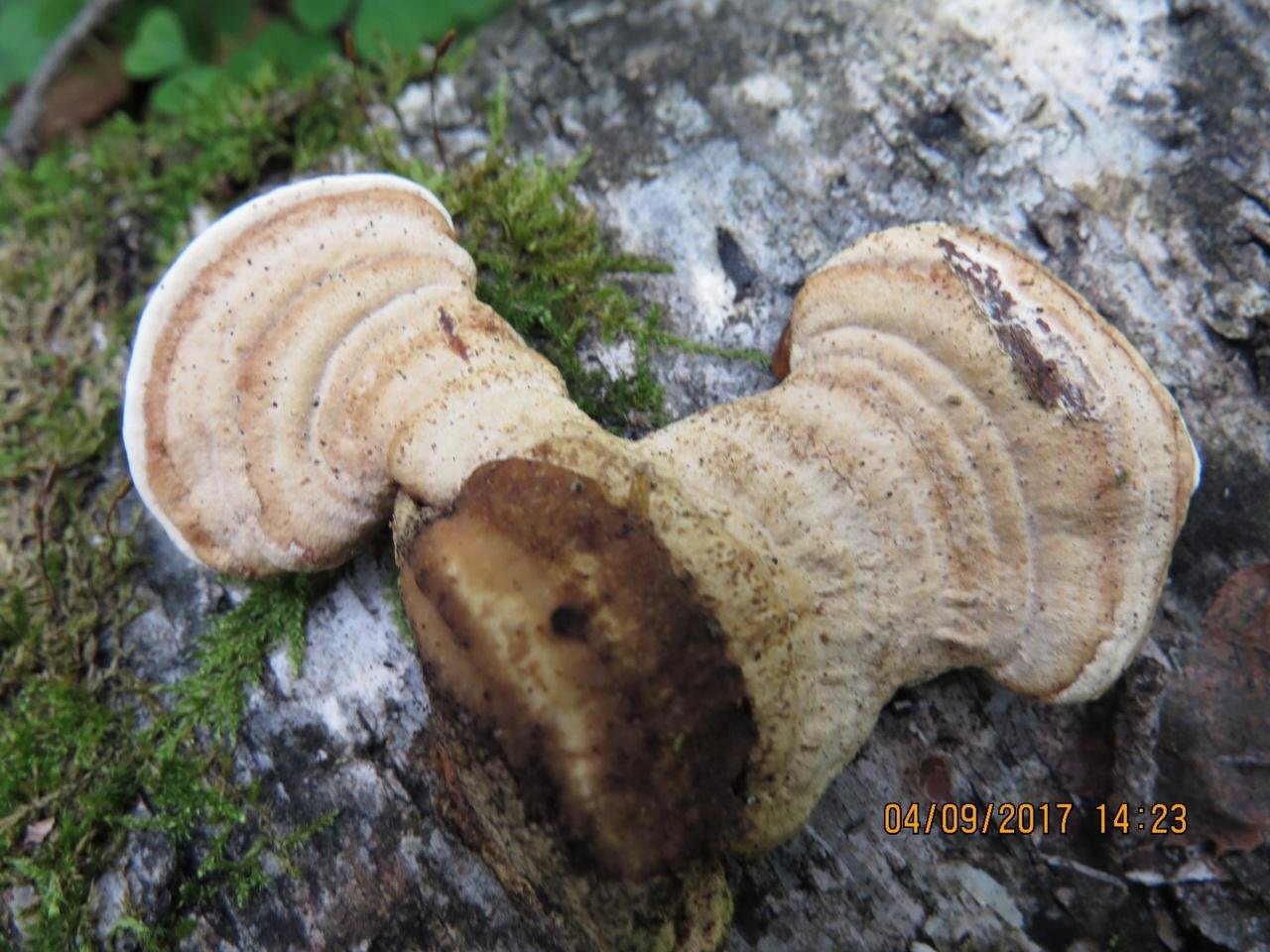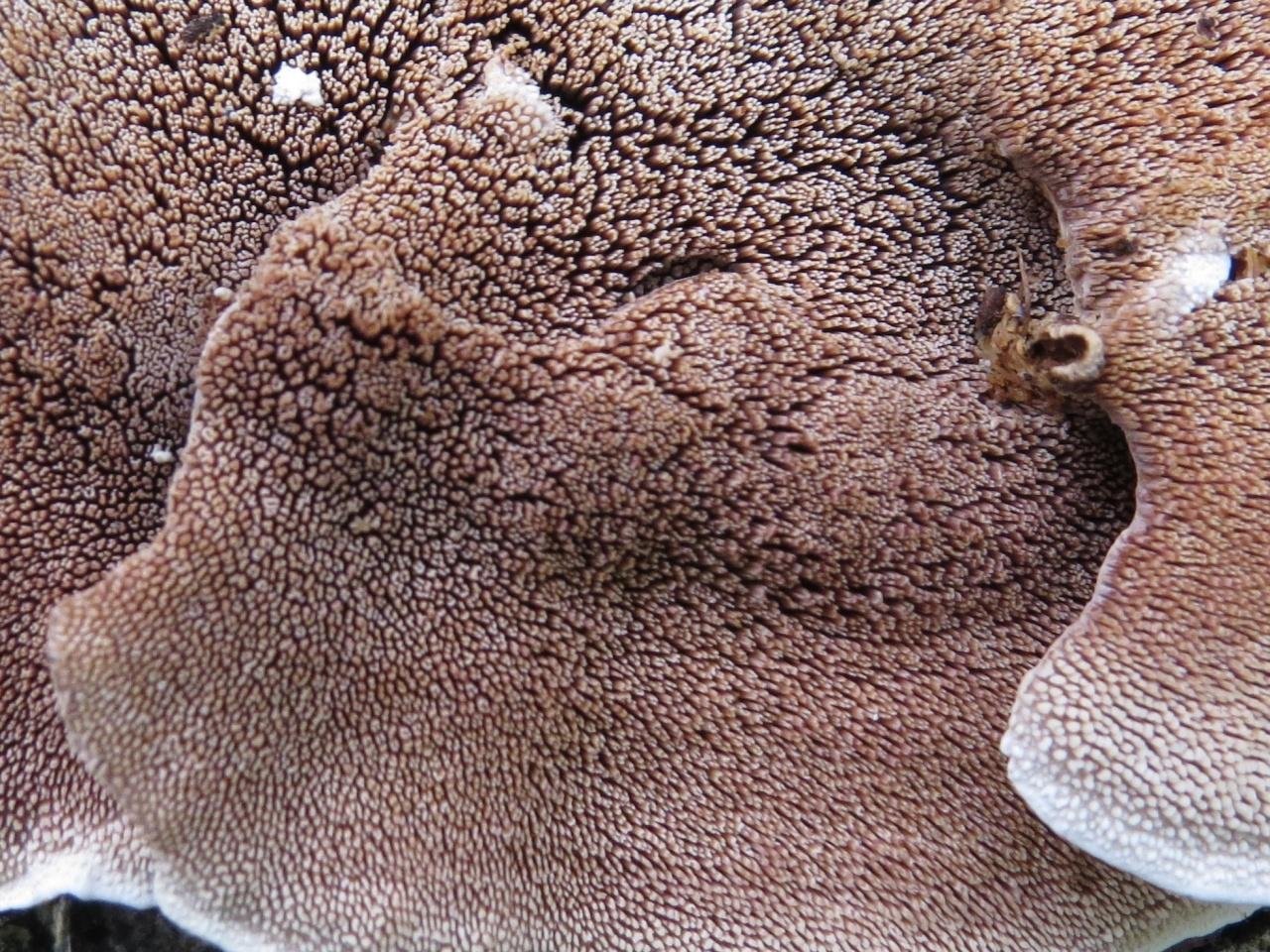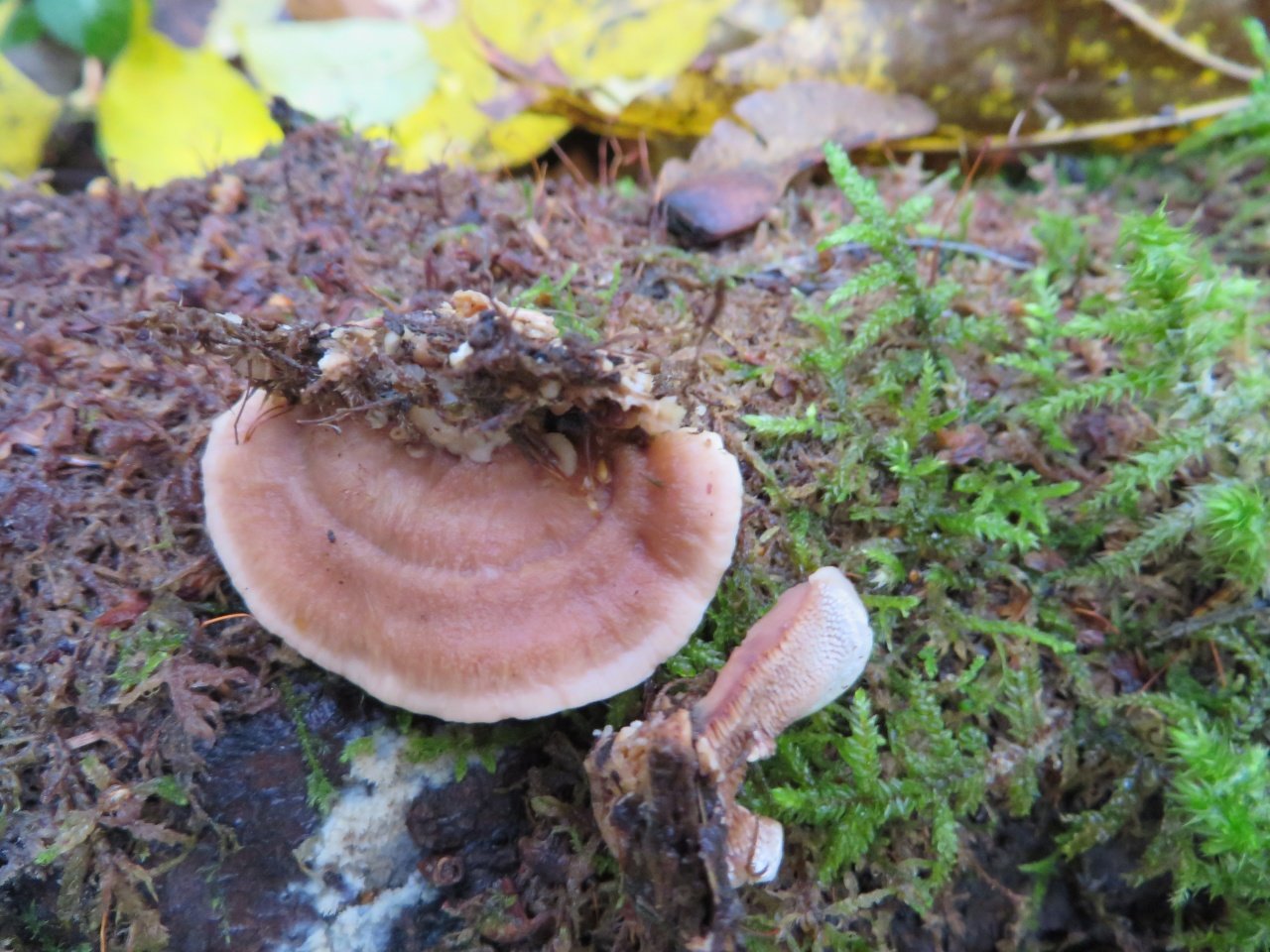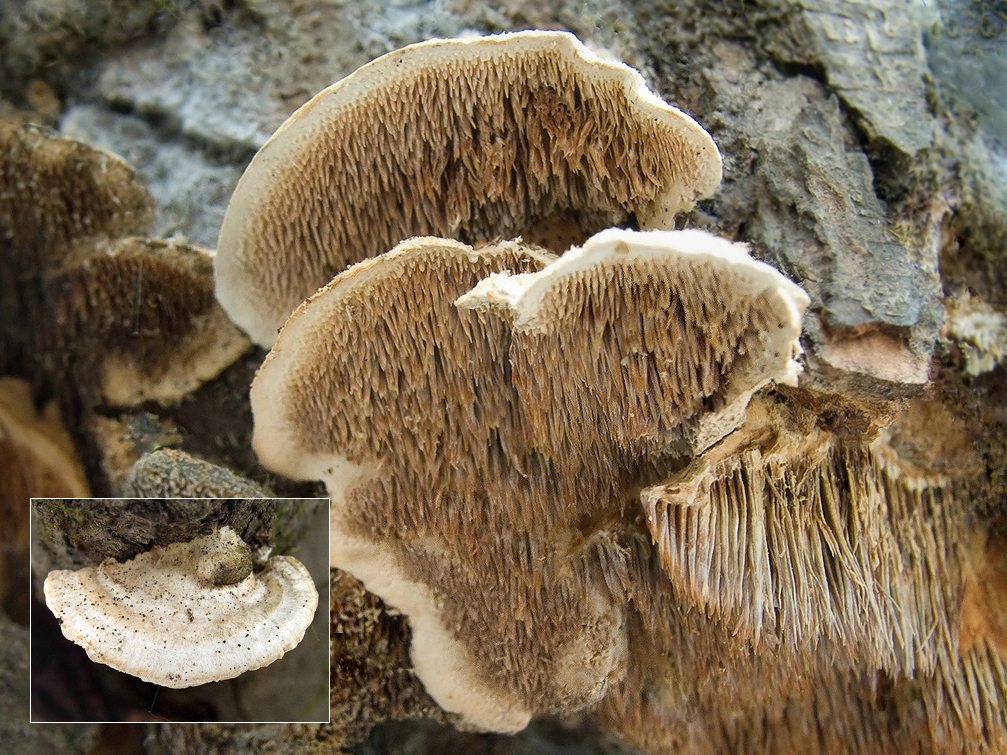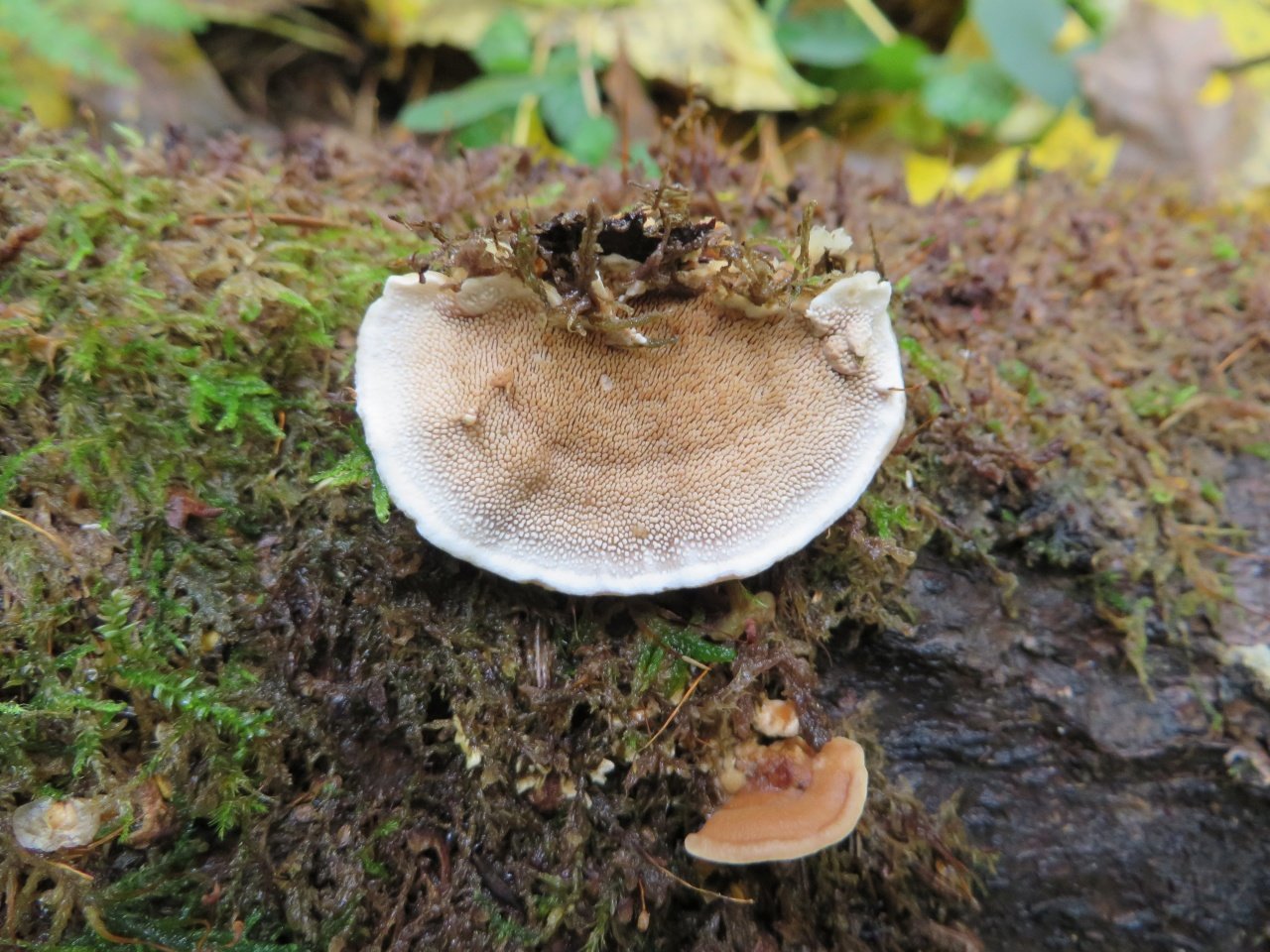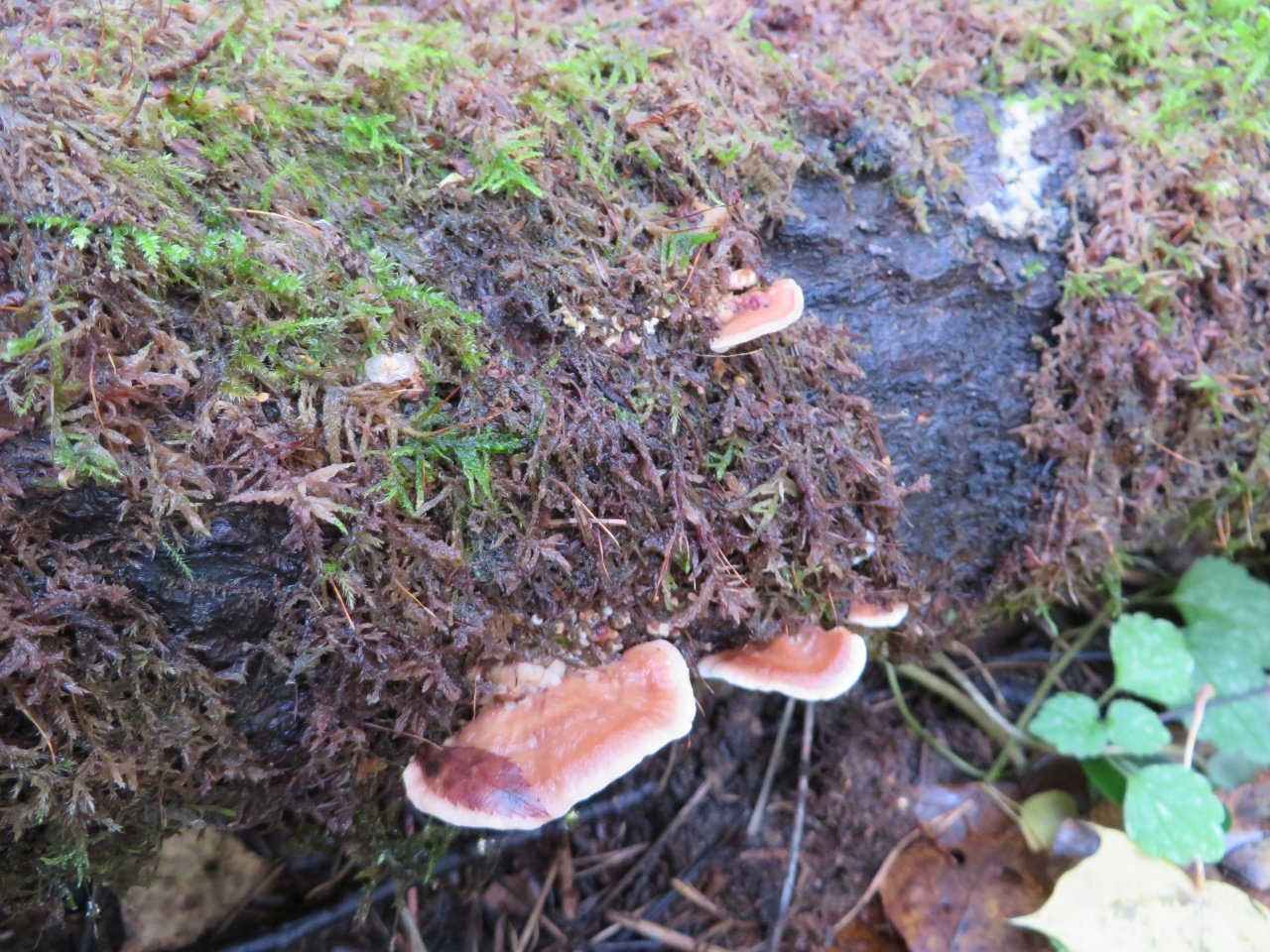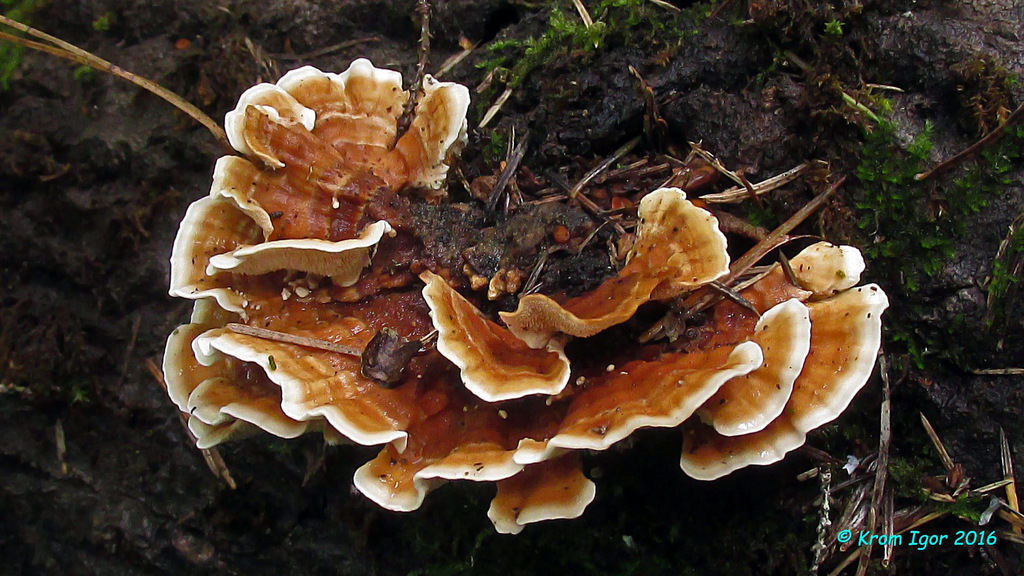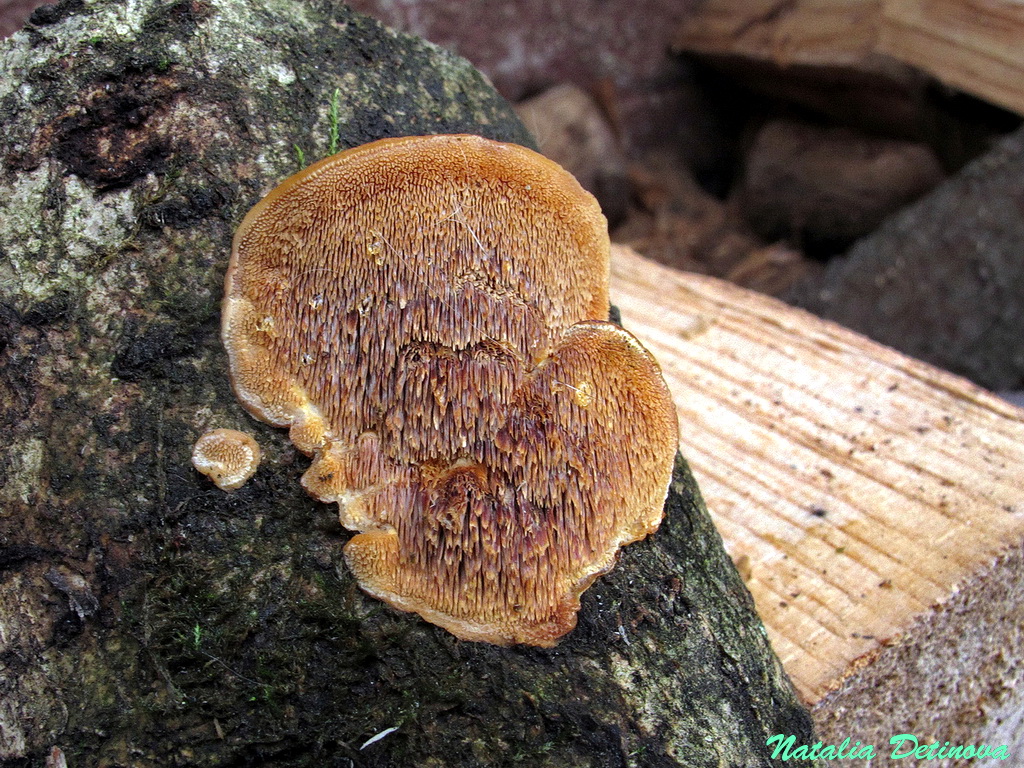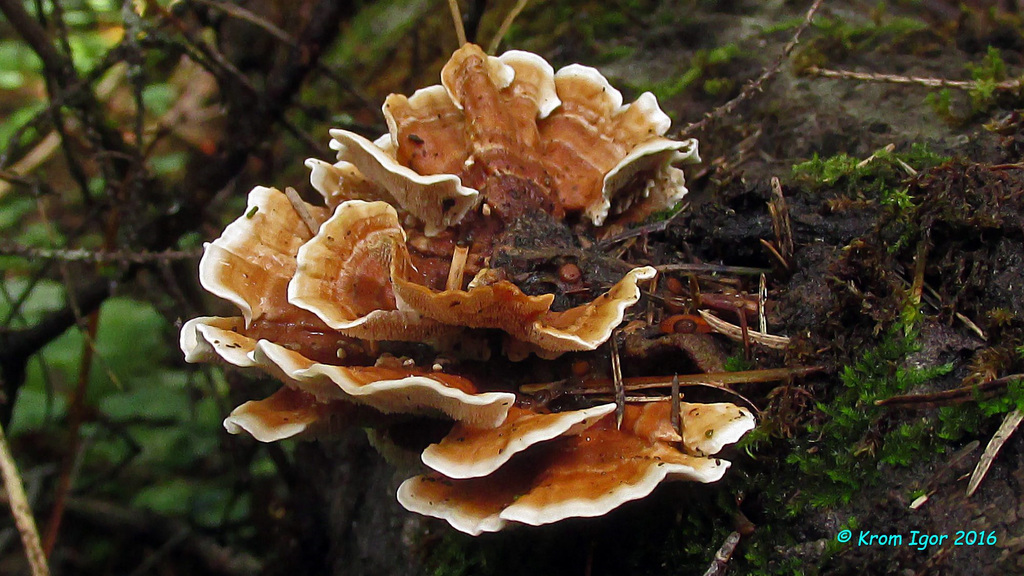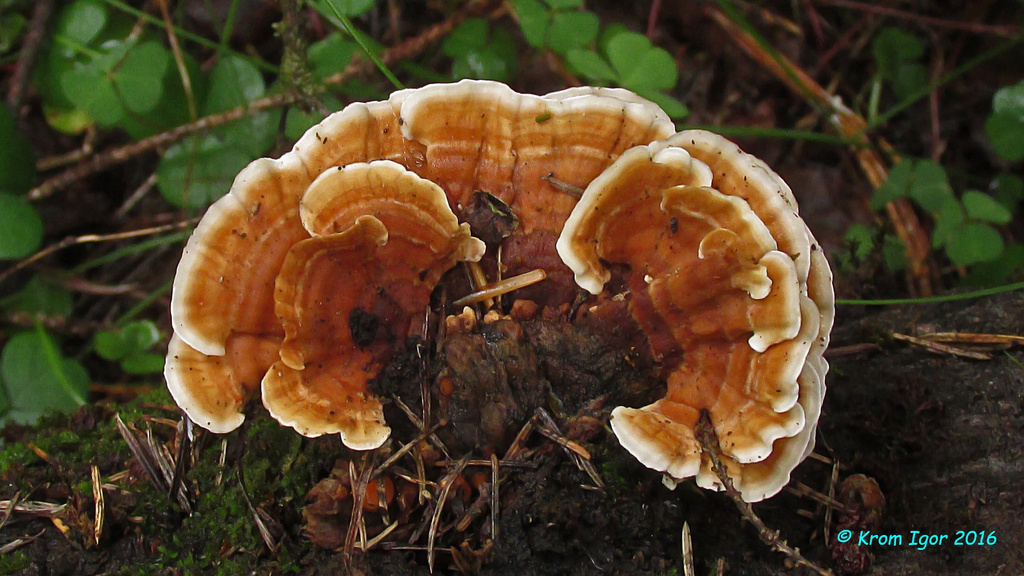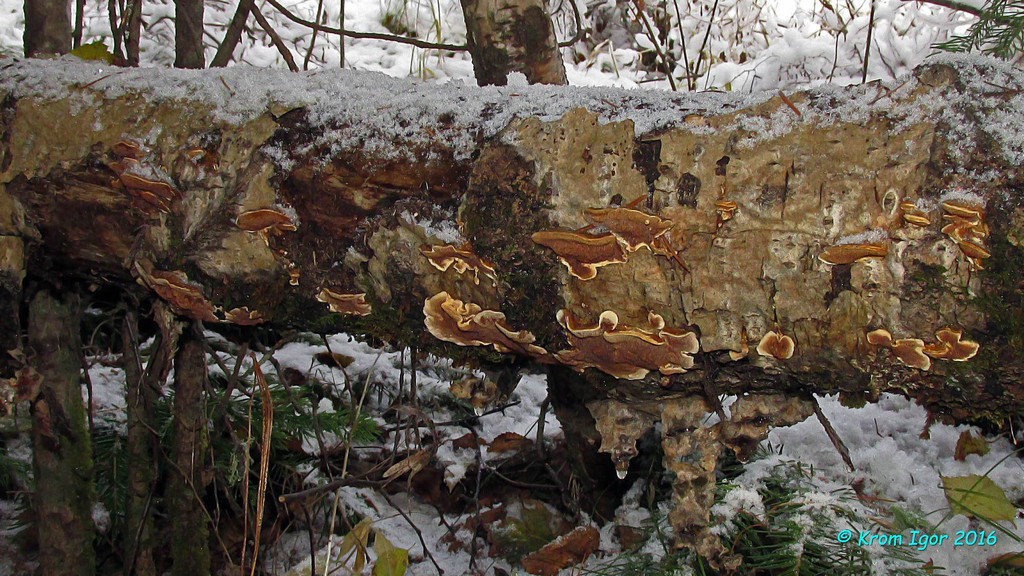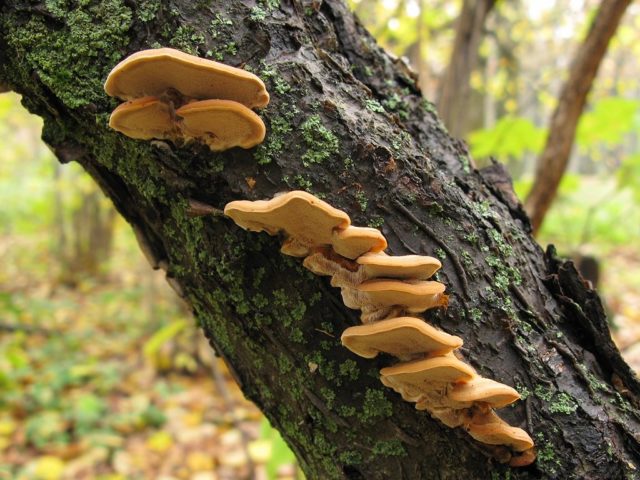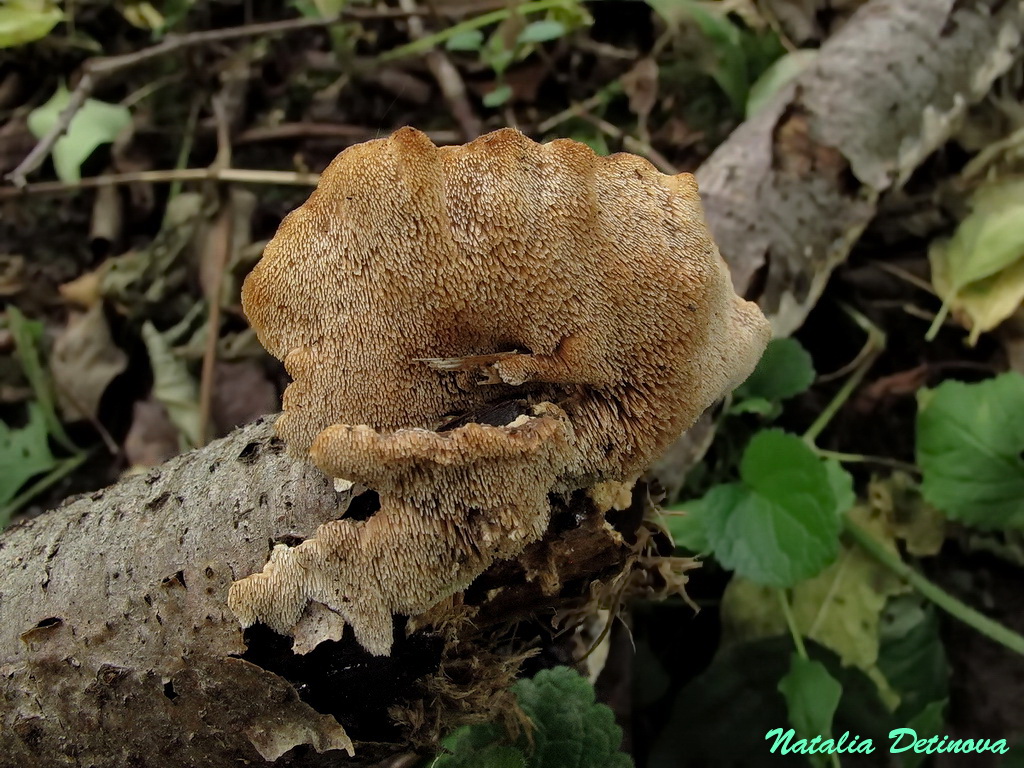Stekherinum Murashkinsky (Metuloidea murashkinskyi)
Synonyms:
- Irpex murashkinskyi
- Mycoleptodon murashkinskyi
- Steccherinum murashkinskyi
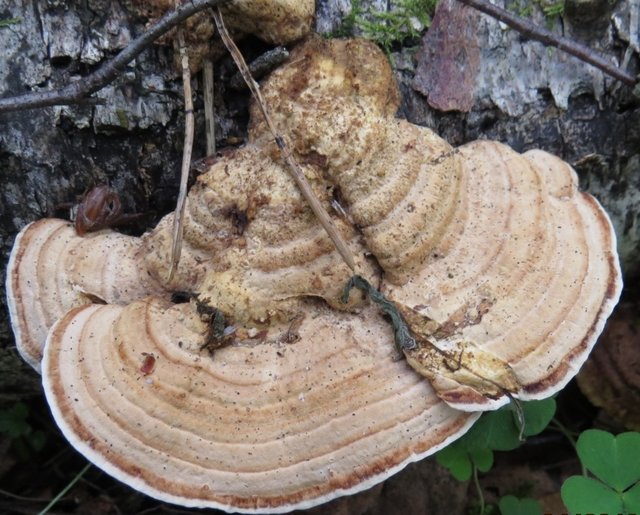
Description
This mushroom was first described in 1931 by the American mycologist Edward Angus Burt, receiving the Latin name Hydnum murashkinskyi. It was assigned to the genus Hydnum because of its prickly hymenophore, and the species name was given in honor of the professor of the Siberian Agricultural Academy K.E. Murashkinsky, who in 1928 sent Bert the samples he collected for determination. Since then, this mushroom has changed several generic names (having visited both the genus Steccherinum and the genus Irpex), until in 2016 it was assigned to the newly formed genus Metuloidea.
Fruit bodies are semicircular sessile caps with a narrowed base, which can be spread, reaching 6 cm in diameter and up to 1 cm thick. They are often arranged in tiled groups. When fresh, they are leathery, and when dry they become brittle. The surface of the caps is initially pubescent, with a pronounced concentric groove. With age, she gradually becomes naked. Its color varies with age and humidity, from whitish, yellowish and creamy to pinkish or reddish brown. In young fruit bodies, the margin is often lighter.
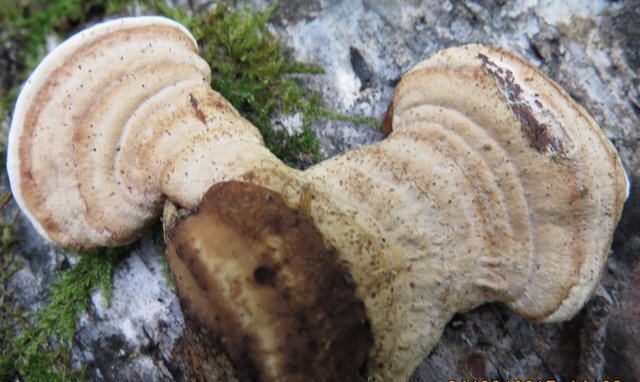
The hymenophore is of the hydnoid type, i.e., prickly. Spines are conical, up to 5 mm long (shorter ones closer to the edge of the cap), from beige-pinkish to reddish-brown, in young fruiting bodies with lighter tips, often located (4-6 pieces per mm). The edge of the hymenophore is sterile and of a lighter shade.
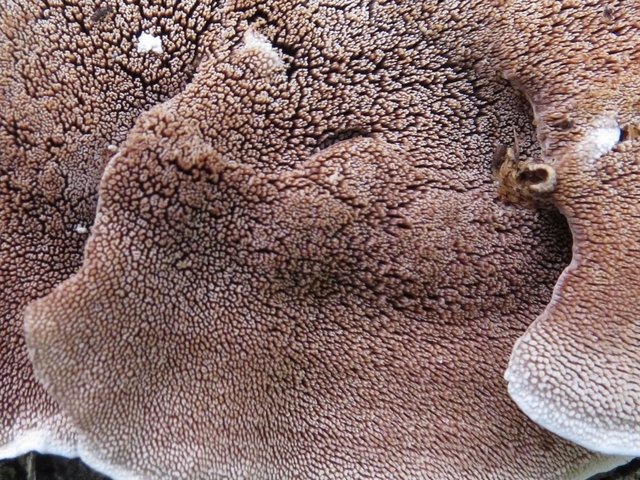
The fabric is 1-3 mm thick, whitish or yellowish, leathery-corky, with a strong aniseed scent that persists even in herbarium specimens.
The hyphal system is dimitic with thick-walled sclerified generative hyphae 5-7 µm thick. The spores are cylindrical, thin-walled, 3.3-4.7 x 1.7-2.4 μm.
Season and distribution
Stekherinum Murashkinsky lives on dead deciduous wood, preferring oak (as well as birch and aspen) in the southern parts of its range, and willows in the northern parts. Causes white rot. The period of active growth is summer and autumn, in the spring you can find overwintered and dried last year's specimens. Occurs in fairly moist mixed or deciduous forests with a lot of dead wood.
Recorded in the European part of Russia, the Caucasus, Western Siberia and the Far East, as well as in Europe (at least in Slovakia), China and Korea. They do not meet often. It is listed in the Red Book of the Nizhny Novgorod Region.

